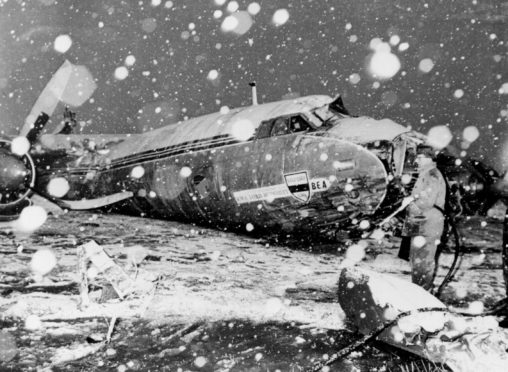
The wife of Sir Matt Busby was the driving force behind the football legend’s return to the top after the tragic air crash in Munich, according to a movie-maker.
Joe Pearlman said Lady Jean was crucial in supporting Sir Matt after Manchester United’s plane crashed in 1958, killing eight of his famous Busby Babes.
Ten years later, the Scots manager led his side to glory in the European Cup but Joe says Matt might not have continued on in the game had it not been for his wife, who the director describes as a “major player in it all”.
“Lady Jean was a huge part of the story, according to the granddaughters,” Joe said. “She was the driving force – she always pushed him on.
“It was Jean who told him he had to return to football after the crash.
“With what must have felt like the future of Manchester and the entire sporting world on her shoulders, she told him, ‘The boys that have gone would want you to carry on – you have to’.”
Speaking ahead of Busby coming to cinemas tomorrow, Joe said: “Sir Matt was an incredible character and his is one of the great football stories. Big cinematic sports documentaries are of the moment and while his story has been told before, it’s not been done on this scale.”
Busby tells the against-the-odds tale of Sir Matt growing up in the Lanarkshire mining village of Orbiston and losing his father and uncle in the First World War, to becoming a footballer and then revolutionary manager of Manchester United.
He rebuilt the team twice – after the Second World War and in the wake of the 1958 Munich air disaster, where eight of his Busby Babes died and Matt almost lost his life. The film climaxes as Sir Matt’s side lifts the European Cup 10 years after the tragedy.
The documentary contains a wealth of previously unseen archive footage of Matt and the squad.
“Our first port of call when we began making the film was to find material no one had seen before,” said Joe, whose previous film was the smash-hit Bros: After The Screaming Stops.
“We worked with super-fan Leslie Millman, who has one of the biggest collections of Man United memorabilia in the world, and looked at his football programmes from the ’40s, ’50s and ’60s to find out where the club played and trained overseas.
“We then contacted local news teams in places like Argentina, Brazil and America to find out if they had undeveloped or unseen newsreels of the squad, and luckily enough a lot came back to us with material.”
The family of Matt, who passed away 25 years ago, was also heavily involved.
“His granddaughters were incredibly helpful and opened up their archives to us,” Joe continued.
“They had boxes and boxes of newspaper clippings and videos, which we dug through, and it helped us build a bigger picture of the man.
“We let Matt tell his story as much as we could from the archive material and I think we’ve done the family proud.”
Joe describes Matt as “one of the most complicated but simple men I have ever encountered”.
“He had those working-class ethics as you would imagine a man of that era and background would have, but he was also a shrewd businessman and an amazing negotiator who knew how to get the best out of people.
“He implemented practices that have shaped modern football, such as introducing a youth system that all of the great clubs now have, and pulling on a tracksuit and getting down and dirty with the players in training, which was revolutionary back then.
“It was also important we showed he was a real person with flaws and I think that’s one of the things that comes out of Munich.
“He felt guilty for what he had done. He’d built this team of stars and then essentially led them to their deaths.
“I think his personal story, this rags-to-riches tale of coming from nothing to being the most important man in football, will resonate. I hope it’s equally as well received as Bros, if not better.”
Busby is in cinemas tomorrow then released digitally on Friday.

Enjoy the convenience of having The Sunday Post delivered as a digital ePaper straight to your smartphone, tablet or computer.
Subscribe for only £5.49 a month and enjoy all the benefits of the printed paper as a digital replica.
Subscribe